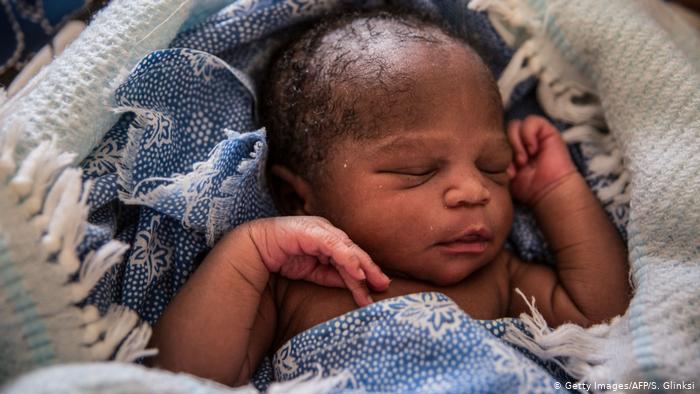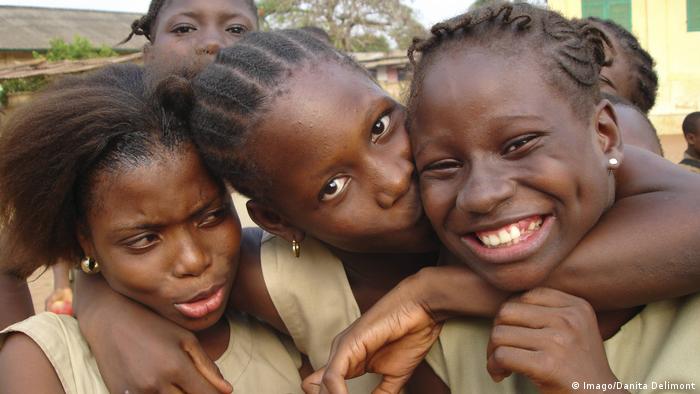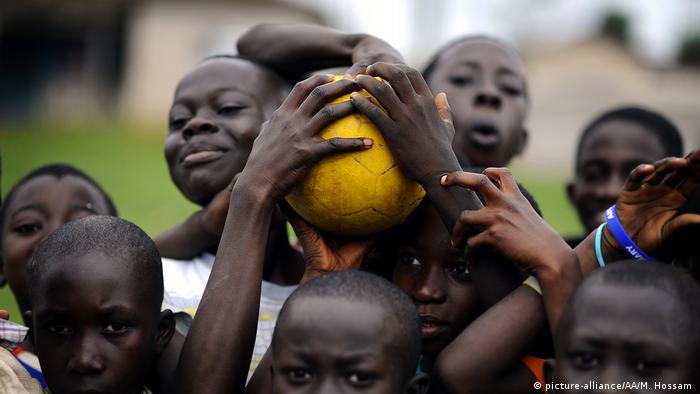
Africa’s population is not only young – it is also growing fast. But the large number of children is not a blessing for families. Economic growth in many countries cannot keep up, poverty is on the rise. The belief that children act as a life insurance in old age is still widespread and is making the demographic situation worse. The population in Africa is expected to double from 1.3 billion to 2.5 billion by 2050.
Niger has highest birth rate
“Such an increase in the number of people poses problems for the individual states and would even overburden a country like Germany,” says Alisa Kaps, a member of staff at the Berlin Institute for Population and Development. She cites the poor West African country of Niger as an extreme example. It has the highest birthrate and will triple its population by 2050. “There is a lack of appropriate infrastructure, health care, access to hospitals, education and jobs for these people,” says Kaps, outlining the dilemma many African countries will face in the future. Despite waning infant mortality, the average birthrate of 4.7 children per woman remains high when compared with the rest of the world.
Will falling birthrates have an accelerating effect on development and thus bring greater prosperity? Or will the number of children being born decline only once the economy grows? “It’s a cycle,” Kaps told DW. She is one of the authors of a study that examined Tunisia, Morocco, Botswana, Ghana, Kenya, Ethiopia and Senegal, the findings of which were recently presented by the Berlin institute. “Both are true,” Kaps says. “It needs a certain amount of development for births to decline and that in turn creates incentives for more growth.” This development can be seen in the Asian countries which have grown into so-called economically strong “tiger states,” including South Korea and Taiwan, according to Kaps.
Education is paramount
Education is a decisive factor for a decline in births. “Improved education works indirectly,” says Kaps. “The longer girls go to school, the older they are by the time they get married,” the study found. “They have higher expectations for their future and contribute more to the family’s income.” Education is precisely what initiates the change in traditional role models, which are often co-determined by religion. A high number of children is often still a must for African parents dependent on them in old age and also because they need their help to work the fields, Kaps says.
According to Jakkie Cilliers, director of the South African Institute for Security Studies (ISS), the continent is currently experiencing a slow demographic transition. Cilliers also blames high birth rates on the low level of education among girls and women and the lack of health care. Add to that a lack of education and modern methods of contraception. “This is a sensitive issue,” Cilliers told DW. He believes that Africa needs to discuss the issue openly, because it affects society as a whole. Cilliers emphasizes that the focus should be on professional training for more people of working age to be able to contribute towards economic growth.
Smaller families the norm in North Africa
“There is a sense among African leaders that because the continent has a large youthful population, that translates into growth. It does, but because of the slow demographic transition, Africa only gets to get its demographic dividend by about 2050,” Cilliers said, meaning that only then will Africans see more income and growth. Other countries, mainly in North Africa, have already met with success. According to Cilliers, Algeria, Tunisia and Morocco have the lowest birthrates on the continent, followed by southern African countries with a smaller number of children per family.
On average, Tunisian women have only two children. North African countries are doing better economically than the other states on the continent. Over the years, Tunisia also implemented a number of reforms targeted at women. They were given more rights, such as the right to vote; they no longer have to wear a veil and enjoy higher education.
South Africa and Egypt are further advanced and are already benefiting from the demographic dividend. This occurs when the number of children falls, while the last generation of high birth rate years enters the labor market and contributes to the economy, but later has fewer children to care for. This presupposes that there are enough jobs for everyone. “But South Africa is lagging behind with high unemployment,” says Cilliers.
Right to self-determination
In addition to South Africa, the small country of Botswana is also on a positive course and has managed to contain the population explosion, the Berlin study found. “But Ethiopia really surprised us,” says Alisa Kaps. The country developed enormously over the past 25 years. Infant mortality rates were halved, school enrolment doubled and life expectancy has risen sharply. “As a result, the number of children per family has fallen to four.” There has been a similar development in Ghana. The country benefited early on from reforms in the health sector, education and agriculture, according to Kaps.
Experience shows that the number of children will decrease if states succeed in developing an effective overall concept that will lead to progress in the areas of education, health and job creation. However, reproductive self-determination remains the main goal. “People must be able to decide for themselves how many children they want,” says Kaps: “There is a whole process that has to be gone through for smaller families to become the norm.”






